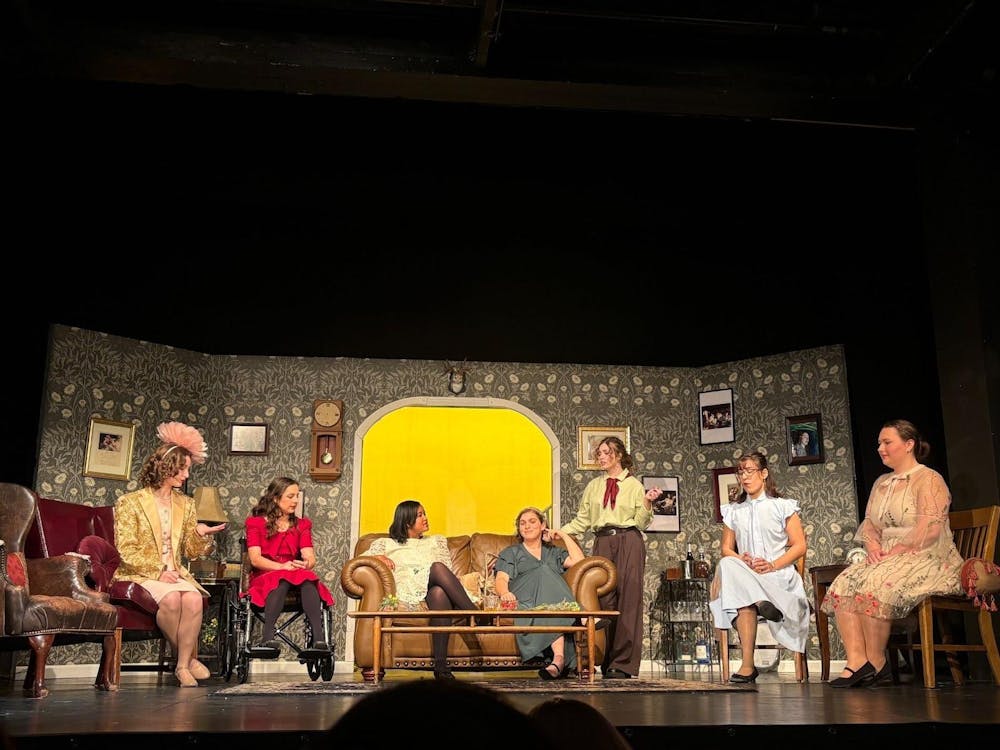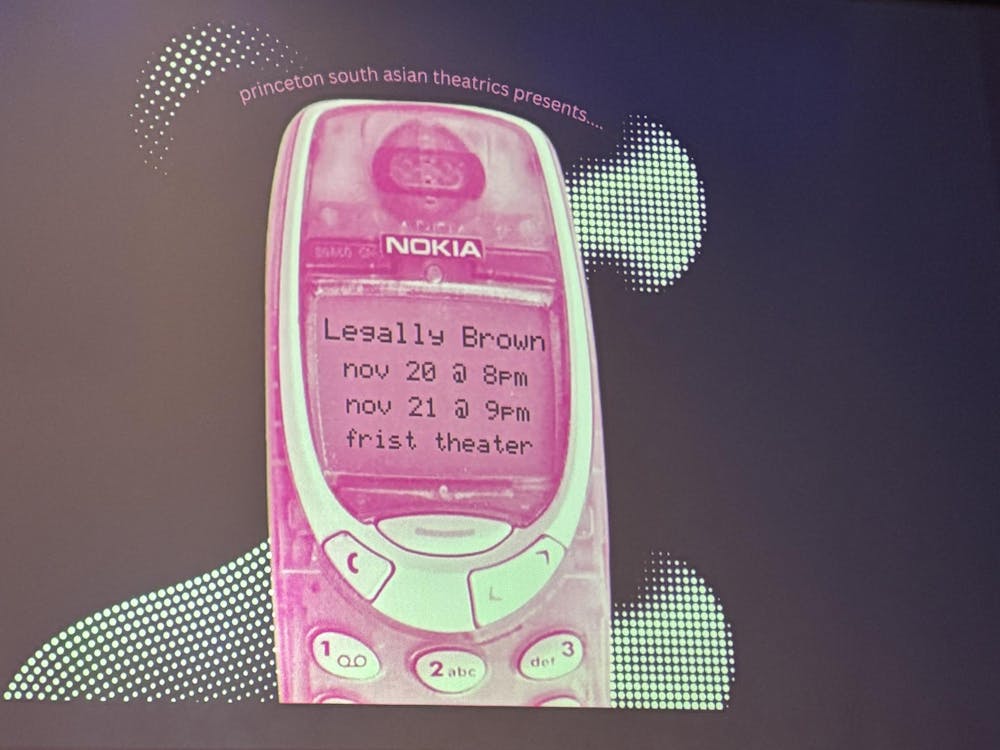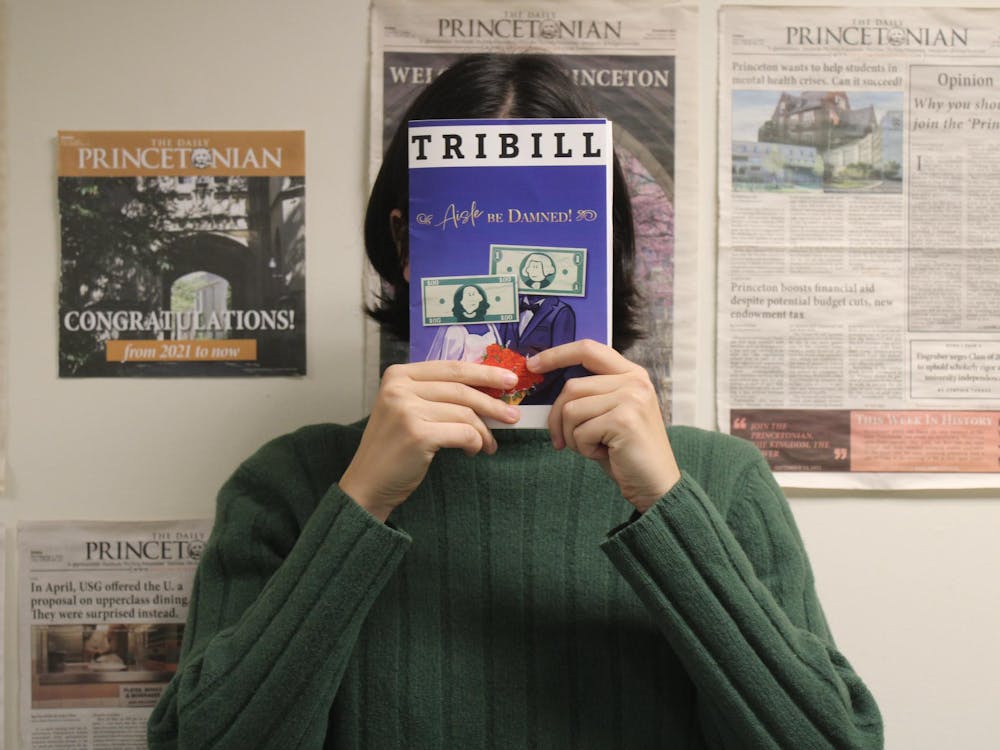Some plays are foolproof.“Romeo and Juliet”isn't one of them — in fact, the hazards are numerous. And unfortunately, the current iteration produced jointly on campus by Theatre Intime and Princeton Shakespeare Company falls into many of them.A little aimless blocking, poor chemistry, lack of energy in key players, some hollow dialogue — and one of Shakespeare's best known and most popular plays may keep you only mildly engaged.
Which isn't to say that this production is a total miss. The set is gorgeous, the sound and lighting design is inventive, and a few outstanding supporting roles elevate the proceedings.But these elements fail to compensate what is overall a flat and unfocused production.
The opening picture of this production will jolt theatergoers to high attention. Hundreds of aged slats of wood overlap and abut, crowding each other to form vast walls vaguely reminiscent of an amphitheater. An impressive, twisting staircase unit, crafted from the same hodgepodge of wood, serves as the central set-piece. The stage is awash with red light, making the totally wooden set appear warm, earthy, infused with magic. Diagonal slashes of clear golden light reach outwards towards the audience. It’s a grand sight.
And when the lights dim, and the famous opening lines begin, "Two households, both alike in dignity", you might even feel a little shiver up your spine.It’s thrilling how this speech, performed in an echo-laden voiceover, situates the audience in the realm of horror.This is no sun-drenched Italian idyll, inhabited by impeccably dressed Veronans. These moments are a booming declaration that Romeo and Juliet’s story is nothing less than nightmarish — a gruesome reminder of the senseless violence that pervades the world. All of this might make an audience hopeful for high-stakes drama. Unfortunately, the urgency of these inciting moments is dropped almost immediately and never totally picked back up again.
This production of “Romeo and Juliet”is visually stunning but lacks emotional fireworks. In this reviewer’s opinion, this is partially the result of a lack of energy that pervades the whole show and partially the result of an inattentive directorial eye. For example: at one point, one character says, “By my head, here comes a Capulet” — and yet no motion has been made to see or hear the supposedly approaching Capulet. Simply put, that’s not how humans behave in conversation and in life — and it ringsclearlyfalse to an audience. Many additional tiny, consistent, overlooked mistakes such as this render the interactions in this play hollow, which detracts from the play’s overall emotional punch.
That being said, when it comes down to it,“Romeo and Juliet”stands or falls on the chemistry of its star-crossed lovers. For language, our stars, played by Robert Keown ’17 and Rachel Stone ’17, both deserve an A.Shakespeare is tough, and they carry the show on their shoulders and their tongues. The language is thick and tricky, and they both persevere with tenacity and style. They play out iconic scenes without dropping a single word. This starring couple seems unsure, however, as to how they fit into the vast, nightmarish vision of the work — a production-wide problem that is not confined to the two starring roles. This universal aimlessness and uncertainty makes our Romeo and Juliet’s affection for each other seem insincere.And as a result, it’s hard to feel anything for literature's most iconic lovers beyond wishing they’d exercised a bit more caution. The blandness of their on-stage relationship may not necessarily be the fault of Stone and Keown, but it neuters this passionate tragedy, robbing the play of its power.
So if Romeo and Juliet don’t blaze, why bother?
I can think of a few reasons. One is Charlie Baker ’17, who plays the hotheaded but lovable Mercutio. He is a thoroughly compelling presence on stage, an exuberant firecracker dispensing puckish humor. The speed and vigor with which he conjures pictures on stage with his wiry body is reminiscent of Robin Williams’ beloved and mischievous Genie. At one point, Baker’s monologues had a small child in the audience in a fit of high-pitched giggles. It’s the surest sign that you’re doing Shakespeare right when four hundred year old jokes can make a six year-old laugh.Andthere’s just enough hazardous TNT packed into Baker’s boundless energy that when his temper flares, it’s perfectly believable and totally tragic. Mercutio’s death, which comes accompanied by a rumbling growl like the sound of the earth tearing apart in its bedrock, is the single most emotionally impactful event of the production.

Another strong supporting actor is Sean Toland GS, who plays the gentle Friar. Toland is delightfully and refreshingly natural as he putters about with his flowers and herbs, lacking any trace of the pompous affectations that Shakespearean actors so often fall into.
There are rare moments in which this play succeeds — actors, sound, lights, and direction all unite in service of a common goal. In these moments, we catch a glimpse of what this production might have been trying to show us: a few people, trying and failing to knock an awareness of the value of human life into a hateful mob for whom senseless violence is as natural as breathing. These moments, however,are too sporadic to be effective, and the night’s proceedings are tepid on the whole.
2 out of 5 paws.
Pros: A few amazing supporting performances, striking sound, set and lighting design.

Cons: Pervasive lack of energy and lack of strong direction.







